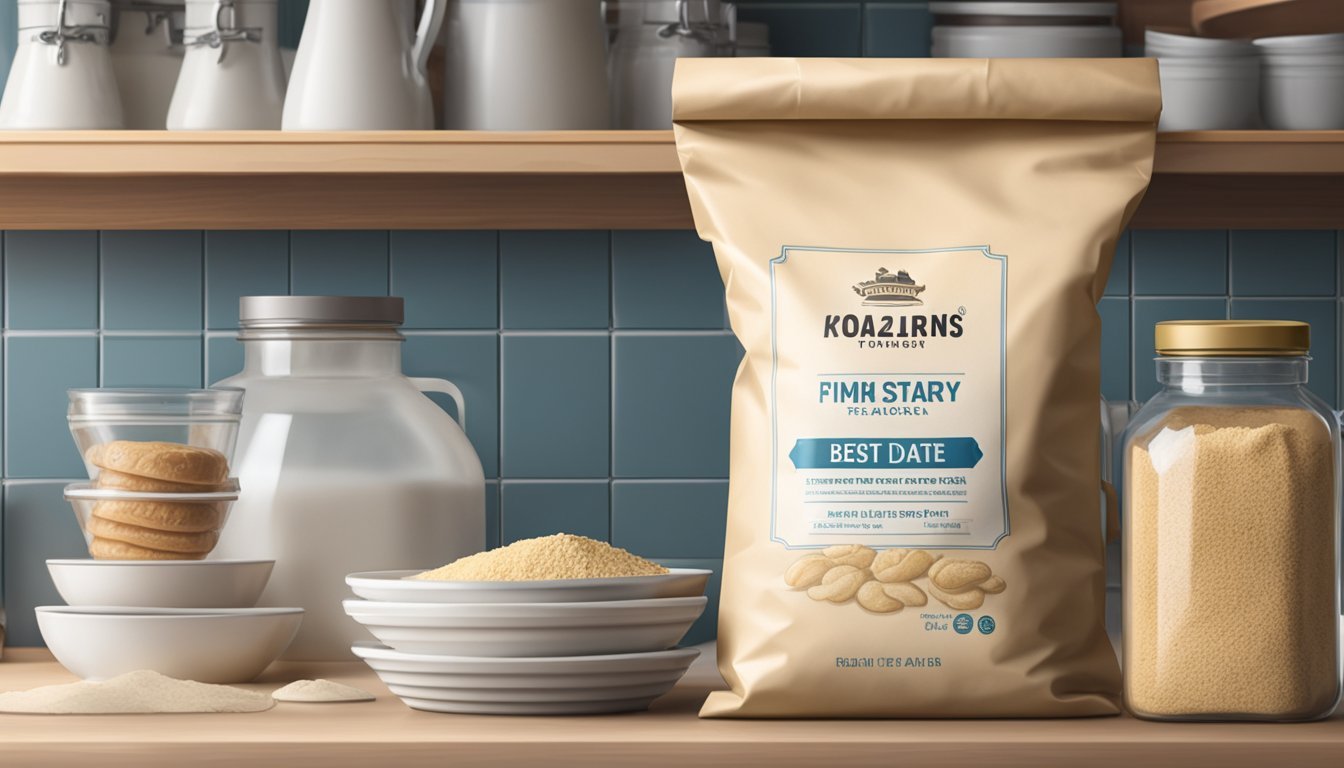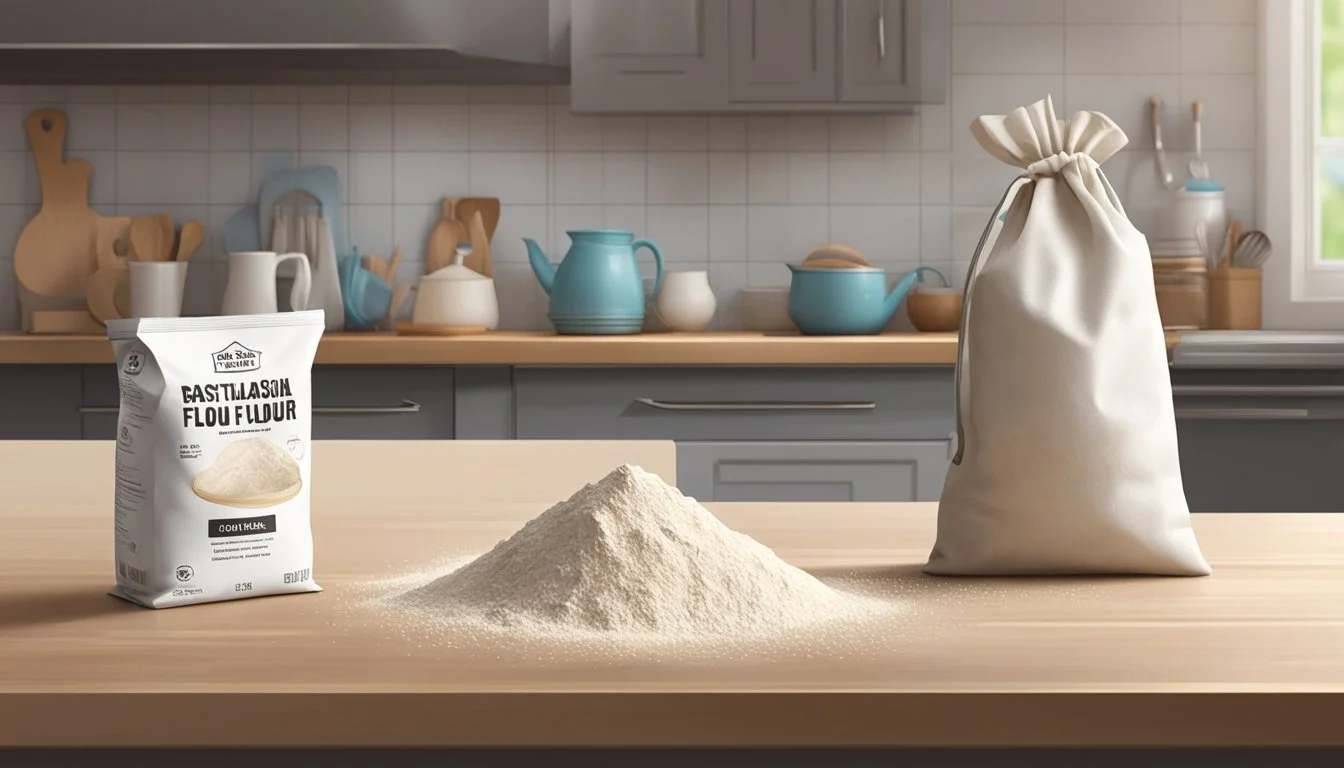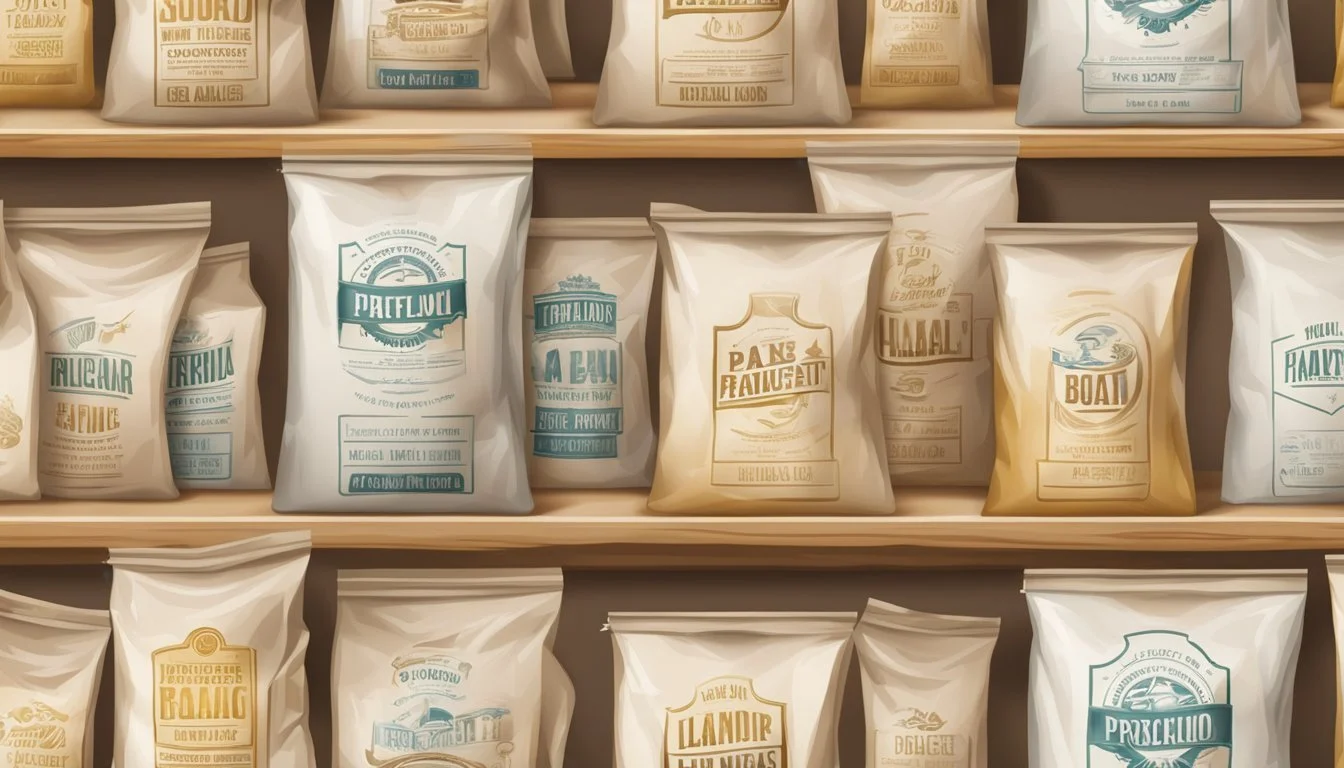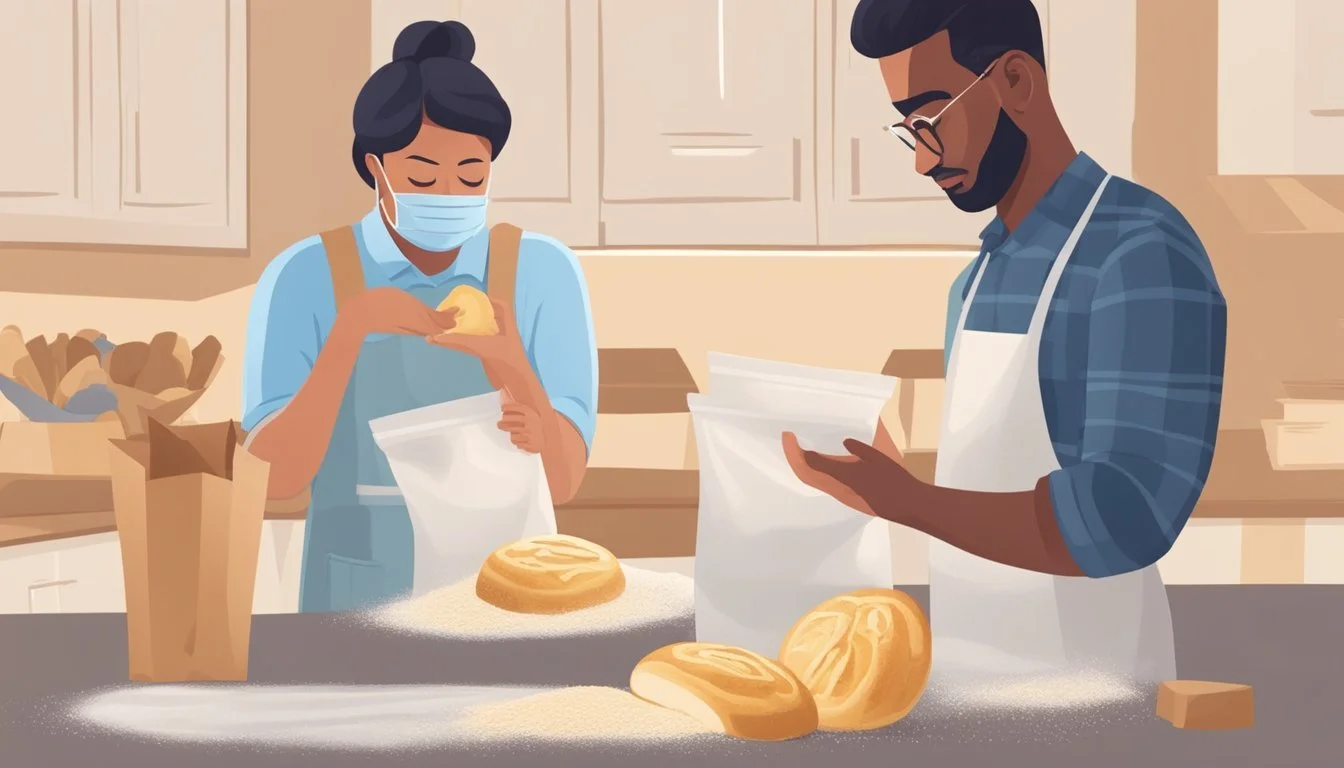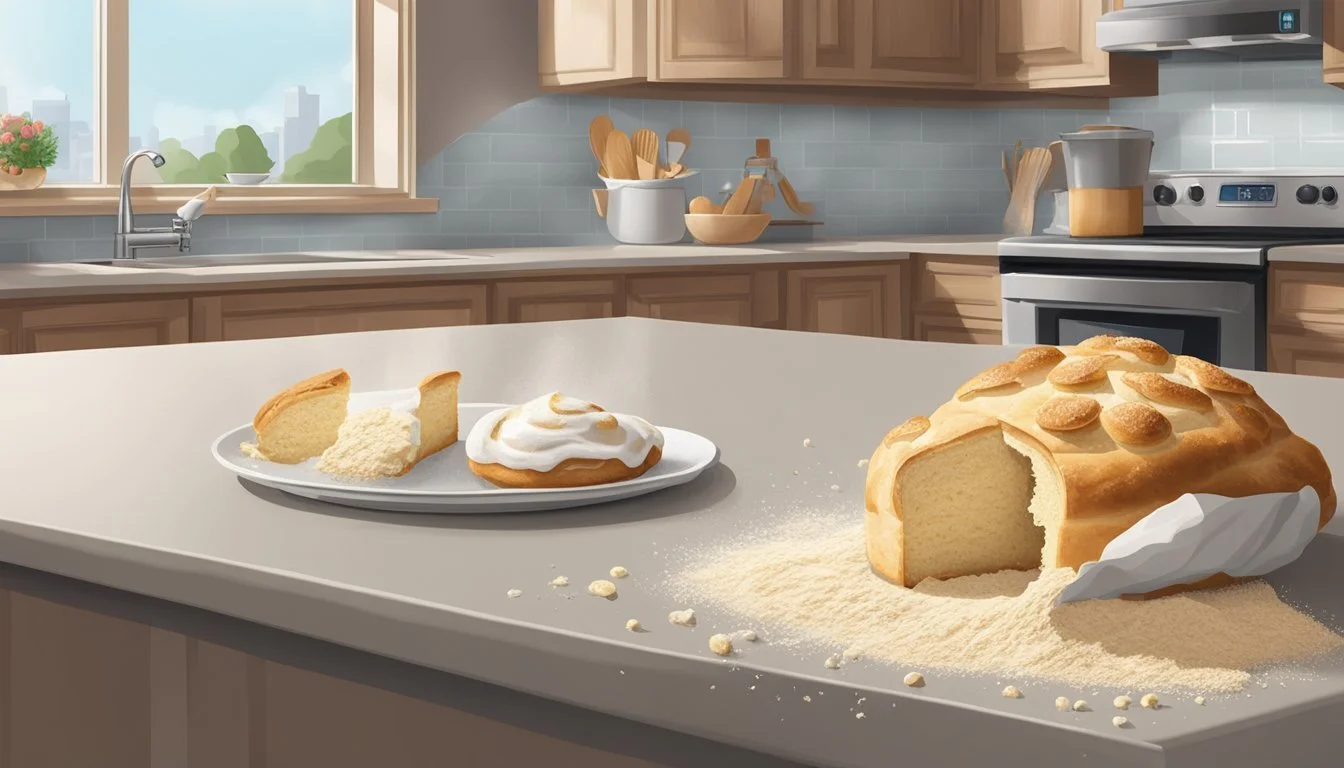Does Pastry Flour Go Bad?
Shelf Life and Storage Tips
Pastry flour, known for its low gluten content, is an essential ingredient for achieving tender, flaky baked goods. Pastry flour can go bad, and its shelf life typically ranges from 3 to 8 months. This varies depending on the type and storage conditions. Proper storage, such as keeping it in an airtight container in a cool, dry place, can extend its usability.
Detecting whether pastry flour has expired involves checking for changes in odor, color, and texture. A rancid or musty smell, a noticeable change in color, and a clumpy texture indicate that the flour is no longer fresh. Regularly inspecting these signs can help ensure your flour remains in good condition for baking.
For those who frequently bake with pastry flour, understanding its shelf life and proper storage methods is crucial. By paying attention to these details, bakers can avoid wasting ingredients and ensure their baked goods turn out perfectly every time.
Understanding Pastry Flour
Pastry flour is known for its fine texture and moderate protein content. It typically contains around 9% protein, placing it between all-purpose flour, which has around 11% protein, and cake flour, which has 7-8%.
This moderate protein content allows bakers to create tender, light baked goods.
Many types of flour exist, each with its specific use:
Type of Flour Protein Content Use All-purpose flour 11% Versatile for various recipes Cake flour 7-8% Delicate cakes and pastries Pastry flour 9% Tender pastries and cookies Bread flour 12-14% Chewy and elastic bread Whole wheat flour Varied Nutty flavor, denser texture Rye flour Low Breads with distinctive flavors Buckwheat flour Gluten-free Gluten-free baking Oat flour Gluten-free Gluten-free cookies and muffins White flour Refined General baking Whole grain flour More nutrients Healthier baked goods
Pastry flour is often used to make pie crusts, tarts, and other delicate baked items. Its lower gluten content compared to bread flour results in a softer and flakier texture.
For those needing gluten-free options, substitutes like almond flour or rice flour can be used, though adjustments in liquid ingredients may be necessary.
Understanding these differences helps in selecting the right flour for any baking task, ensuring the best possible results.
Factors Affecting Flour Shelf Life
The shelf life of pastry flour depends on several factors including moisture, pests, and oxidation. Proper storage can help extend the usability of flour and maintain its quality.
Moisture and Spoilage
Moisture significantly impacts the shelf life of flour. High humidity levels or improper storage can introduce moisture into the flour, leading to mold growth. Moldy flour emits a musty odor and presents visible clumps. Once flour is exposed to moisture, it becomes a breeding ground for bacteria and fungi, which can spoil it quickly.
Store flour in an airtight container to prevent moisture absorption. Keep the storage area cool and dry to discourage mold and other microbial growth. Using desiccant packets can also help control humidity.
Pantry Pests and Contamination
Pantry pests like weevils and moths can infest flour, affecting both its safety and quality. Even small eggs laid by pests can lead to a full infestation over time. Infested flour usually has visible bugs or larvae and often emits an unpleasant odor.
Inspect the flour regularly for signs of pests and contamination. Use sealed containers to store flour and regularly clean the pantry to prevent infestation. Freezing flour for 48 hours after purchase can kill any pests or eggs present.
Oxidation and Rancidity
Exposure to air causes flour to oxidize, which eventually leads to rancidity, especially in whole grain flour containing natural oils. Rancid flour emits a sour odor and affects the taste and texture of baked goods. Whether stored at room temperature or refrigerated, proper sealing is crucial to minimize oxidation.
Use airtight containers to limit air exposure. Store flour in a cool, dark place to slow down the oxidation process. Keeping flour in the refrigerator can extend its shelf life significantly by limiting the action of oxidative agents and oils degradation.
Maintaining proper storage conditions is essential to extend the shelf life of pastry flour, ensuring it remains fresh and safe for baking endeavors.
Proper Storage of Flour
Proper storage of flour is crucial to maintaining its quality and extending its shelf life. The key is to keep flour in airtight containers and store it in a cool, dry place to avoid exposure to moisture and pests.
Storing Flour in Pantry
To store flour in a pantry, ensure it is kept in a cool, dry place. Avoid locations near heat sources like stoves or ovens. Flour should be placed in an airtight container to prevent moisture and pests from getting in.
Using glass, plastic, or metal containers is recommended over paper or cloth bags. This method can help keep flour fresh for up to a year, depending on the type of flour.
Refrigerating and Freezing Flour
Refrigerating or freezing flour is an effective way to extend its shelf life. When storing in the fridge, ensure the flour is in an air-tight container to avoid absorbing odors from other foods.
In the freezer, flour can last up to two years if stored properly. Allow the flour to return to room temperature before using to prevent clumping. This method is especially beneficial for whole grain flours that spoil more quickly.
Best Containers for Flour
Choosing the right container is essential for keeping flour fresh. The best options are airtight containers made of glass, plastic, or metal. These materials provide a strong barrier against moisture and pests. Avoid paper or cloth bags as they are permeable.
For those buying in bulk, consider a large flour bucket that can hold 25 lbs of flour. Properly sealed containers can significantly extend the shelf life of your flour, preserving its quality and taste for your baking needs.
Identifying Spoiled Flour
It’s crucial to recognize when pastry flour has gone bad to ensure food safety and maintain quality in baking. Various factors such as visual indicators, smell, taste, and texture can help determine whether flour should be discarded.
Visual Quality Indicators
Consistent color and absence of foreign particles are key indicators of good flour. Spoiled flour often exhibits discoloration, which can manifest as yellowing or spots of gray and white.
Another clear sign is the presence of mold or dark patches. Look for any lumps or uneven textures, as these could indicate moisture absorption, which promotes spoilage. Bugs, larvae, and insects may also infest expired flour, so check for any unusual movement or particles.
Smell and Taste Tests
The smell of flour can tell a lot about its condition. Fresh flour typically has no smell or a faint nutty aroma. When spoiled, it emits a rancid, sour, or musty odor, indicating the presence of spoilage microorganisms or oxidation.
If the flour passes the initial visual and smell tests but is still questionable, a small taste test can be conducted. Expired flour may taste stale or off, lacking the subtle sweetness of fresh flour and often having a bitter or sour note.
Texture Changes
Changes in texture are significant markers of flour quality. Fresh pastry flour should feel smooth and fine when rubbed between fingers. Spoiled flour often becomes clumpy or develops lumps due to moisture exposure.
Clumping can be accompanied by a gritty or coarse feel, which may suggest the presence of foreign contaminants or that the flour has absorbed odors and tastes from its surroundings, rendering it unsuitable for baking. Notice any significant hardening or formation of solid chunks as a critical sign of spoilage.
Health Considerations
When it comes to food safety and wellness, using expired pastry flour can pose certain health risks. Freshness and proper storage are paramount to prevent any potential health issues linked to expired flour.
Risks of Expired Flour
Expired pastry flour may harbor mold, which can produce harmful mycotoxins. Mycotoxins are toxic compounds that can contaminate food and make you sick if ingested. Signs of moldy flour include a musty smell or visible clumps.
Using old flour can also affect the freshness and quality of baked goods. Consuming baked items made from spoiled flour might lead to digestive issues. It's essential to regularly check flour for signs of spoilage to ensure it remains safe for use.
The Link to Food Safety
Food safety is a major concern with expired flour. Flour should be stored properly to maintain its quality and prevent contamination. Flour kept in a cool, dry place in an airtight container is less susceptible to spoilage.
Improper storage can lead to the growth of harmful bacteria and fungi. This poses a risk to health if consumed. Expired flour may not show immediate signs of spoilage but can still be unsafe. Always checking the expiration date and storing flour correctly are critical for maintaining food safety.
Maximizing Flour Freshness
Proper storage is key to keeping pastry flour fresh. Store flour in an airtight container to prevent moisture and pests from getting in. Keeping it in a cool, dry place is essential. A cupboard or pantry works well for this.
Label containers with the purchase date to track how long the flour has been stored. Using it within the recommended period ensures optimal results in baking. For pastry flour, the shelf life can range from 6 to 12 months.
Self-Rising and White Pastry Flour
Self-rising flour contains baking powder, so its shelf life may be shorter. Check best-by dates for specific guidance. White pastry flour generally lasts longer than whole grain flours, which contain more oils and can become rancid quicker.
Identifying Spoilage
To determine if flour has gone bad, smell it first. A rancid or musty odor indicates spoilage. Check for clumps, which can signal moisture presence. Whole grain flours tend to spoil faster due to their oil content.
Extending Shelf Life
For longer storage, refrigerate or freeze the flour. This is especially useful for whole grain flours. Ensure it’s in a sealed container to prevent condensation. When ready to use, allow the flour to come to room temperature to avoid affecting baking performance.
By following these tips, the freshness and quality of pastry flour can be maximized, ensuring better baking outcomes.
Practical Tips and Tricks
Understanding how to store pastry flour effectively can help extend its shelf life and prevent common issues like lumping. Proper storage and handling are key to maintaining quality and reducing food waste.
Extending Shelf Life
To maximize the longevity of pastry flour, store it in an airtight container in a cool, dry place, like a pantry or cupboard. Flour should be kept away from direct sunlight and moisture, which can accelerate spoilage.
For longer storage, freezing is an excellent option. Place the flour in a resealable plastic bag or airtight container before freezing. This method can extend the flour's shelf life by several months.
Always check the best by date and label containers with the date of purchase. Rotating older flour to the front of the storage area ensures it gets used first, reducing the risk of it going bad.
Preventing Flour Lumping
Lumping can occur if flour is exposed to moisture, so keeping it dry is crucial. Use a clean and dry scoop or measuring cup to handle the flour. Avoid using wet utensils, which can introduce moisture and cause lumps to form.
Sifting flour before use can help break up any existing lumps, ensuring a smooth, clump-free consistency for baking. Store flour in a tightly sealed, moisture-proof container to protect it from humidity.
Regularly checking the container for signs of moisture or clumping can prevent issues before they start. Taking these steps ensures your flour remains in optimal condition for all your baking needs.
Flour in Baking and Cooking
Flour is a foundational ingredient in both baking and cooking, providing structure to countless recipes.
Baking: In baking, flour is crucial for making cakes, pastries, and cookies. The protein content in flour affects the texture—high-protein bread flour yields a chewy texture, while pastry flour gives a tender, delicate crumb.
Cooking: Flour is also used in cooking to thicken sauces, create roux, or coat proteins for frying. It adds texture and substance to a variety of dishes.
Types of Flour:
Bread Flour: High in protein, ideal for yeast breads.
Pastry Flour: Low protein, perfect for tender pastries.
All-Purpose Flour: Versatile, suitable for most recipes.
Nut Flours:
Almond Flour: Adds a nutty flavor and is excellent for gluten-free baking.
Coconut Flour: Absorbs more liquid and gives a distinct taste.
Here's a quick comparison:
Flour Type Protein Content Best Used For Bread Flour High Yeast breads Pastry Flour Low Pastries, cookies All-Purpose Flour Medium General baking and cooking Almond Flour Variable Gluten-free baking, adding flavor Coconut Flour Absorbs more liquid Gluten-free recipes, adding texture
Understanding these types allows one to choose the best flour for each specific recipe, ensuring the desired results in both baking and cooking.
Additional Considerations
Pastry flour, like other wheat-based flours, has its unique storage requirements.
When storing pastry flour for extended periods, always check the expiration date. The USDA recommends keeping flour in an airtight container to preserve its quality. Proper storage can extend its shelf life up to 6 to 12 months.
For those using gluten-free alternatives, note that these flours might have different storage needs and shelf lives compared to traditional pastry flour.
Expired pastry flour can still be useful in other ways. It can serve as a thickener for soups or sauces, or even as a dusting agent for non-edible surfaces. This ensures minimal waste and practical usage.
It's also important to consider where you source your pastry flour. Using affiliate links from reputable suppliers ensures high-quality products and perhaps even additional benefits from the commission earned.
Different flours vary in protein content, affecting their baking properties. For instance:
Pastry Flour: ~9% protein
All-Purpose Flour: ~11% protein
Cake Flour: 7-8% protein
Understanding these differences can help in choosing the right flour for your baking needs, ensuring the best results and texture in finished products.
Understanding Flour Labels
When examining flour labels, there are several key components to consider. These elements provide crucial information about the product’s shelf life, quality, and appropriate usage.
Best-by Dates indicate the timeframe within which the flour is expected to remain at peak quality. Unlike expiration dates, best-by dates do not necessarily mean the flour is unsafe to use after this time, but the quality may diminish.
Expiration Dates, on the other hand, signify the point after which the flour may no longer be safe to consume. It's essential to pay attention to these dates to avoid using potentially spoiled flour.
Flour labels often list whether the flour is self-rising, indicating it contains baking powder and salt. This distinction is crucial as it affects the flour’s use in baking recipes. For pastries, it’s typically best to use plain, unbleached pastry flour for an optimal, tender texture.
Another aspect to consider is the protein content. Pastry flour usually contains a lower protein content (8-10%) compared to all-purpose flour. This makes it suitable for delicate baked goods that require minimal gluten development.
Storage Instructions are vital for prolonging the quality of flour. Labels often recommend storing flour in a cool, dry place, ideally in an airtight container. This helps prevent exposure to moisture and pests, which can lead to spoilage.
To summarize the key details:
Best-by Date: Quality assurance timeframe
Expiration Date: Safety indicator
Self-Rising Indication: Contains baking powder and salt
Protein Content: Affects texture and gluten formation
Storage Instructions: Prolong shelf life and quality
Understanding flour labels helps ensure you use the correct type of flour and maintain its quality for the best baking results.
The Broader Impact of Flour Spoilage
Flour spoilage has several significant effects on both households and the broader community. One major impact is food waste. When flour goes bad, it often ends up in the trash, contributing to the larger issue of food waste. Given the worldwide movement toward reducing waste, spoiled flour represents a setback to these efforts.
Mold growth is another serious consequence. Flour stored in humid conditions can develop mold, posing health risks if unintentionally consumed. Moldy flour must be discarded immediately, further contributing to waste and potential contamination risks within the kitchen environment.
Rancidity also affects flour. The fats in flour can oxidize over time, leading to a rancid smell and taste. Rancid flour significantly alters the flavor profile of baked goods, making them unpalatable. Consumers then discard these products, again increasing food waste.
When flour goes bad, it not only impacts home cooks but also businesses. Bakeries and restaurants may face increased costs due to frequent replacements of spoiled flour. It can disrupt production schedules and lead to a decrease in product quality, affecting customer satisfaction and potentially harming their reputation.
In summary, the spoilage of flour has broader implications that extend beyond mere inconvenience. It contributes to increased food waste, poses health risks through mold growth, and impacts the quality of food products due to rancidity. Businesses and households alike must take proper storage measures to mitigate these effects.

